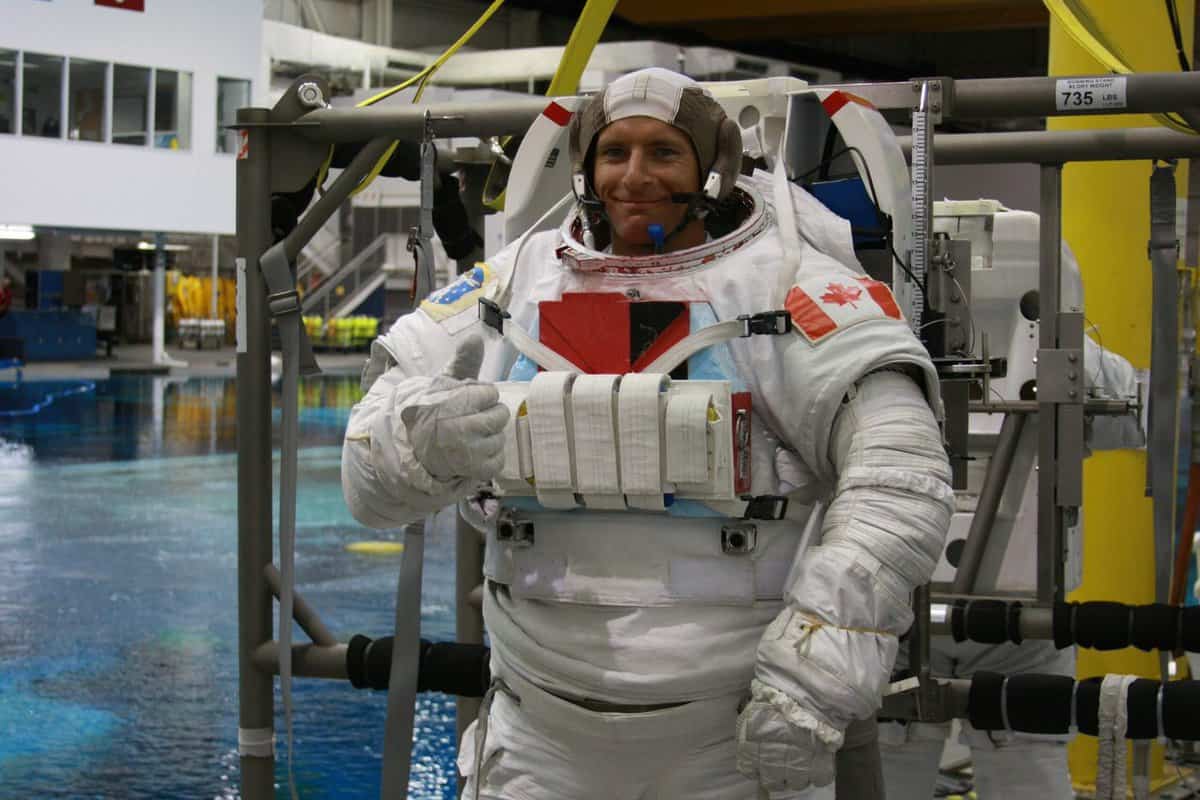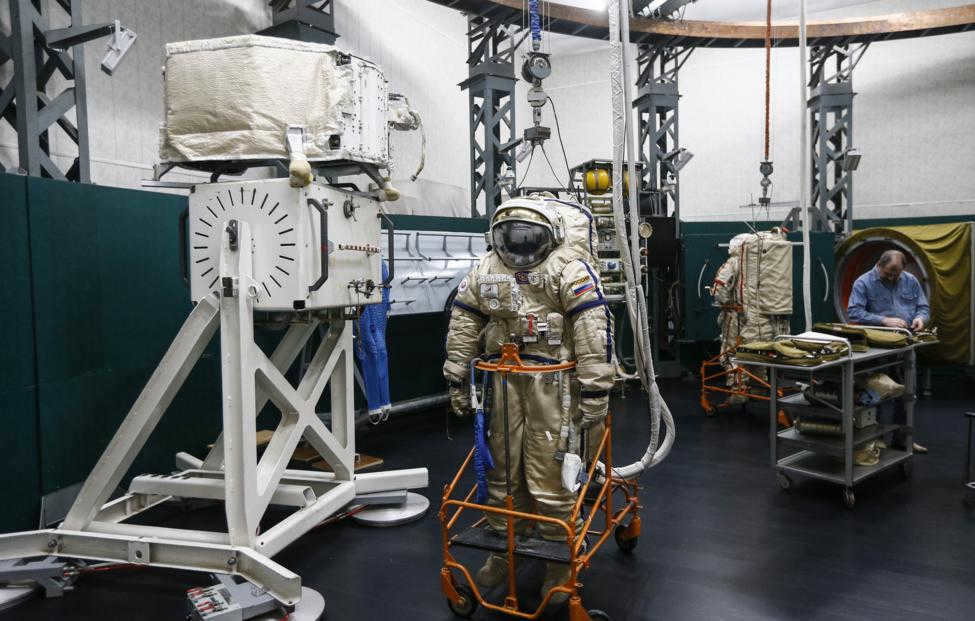
Back in the day, every young boy aspired to be an astronaut; the twinkling stars against the pitch-black backdrop of the universe and the beautiful sight of our planet Earth, suspended in the sky by a delicate layer of atmosphere, call out to people to explore beyond the confines of our atmosphere. However, those who dare to dream are aware of the immense effort and countless hardships it takes to ascend above the Earth’s surface and gaze out into the vastness of space, weightlessly drifting by the window.
Who is eligible to qualify for the astronaut selection process
The opportunity to venture into space arises when Roscosmos, on behalf of the government, declares a supplementary recruitment drive for the astronaut squadron. Primarily, prospective candidates must meet the anthropometric requirements, including height, weight, chest circumference, foot length, and more. For instance, a seated astronaut should not exceed 99 cm in height in order to fit comfortably in the chair. Additionally, the width of the hips and the size of the shoulder area should also fall within the specified parameters.
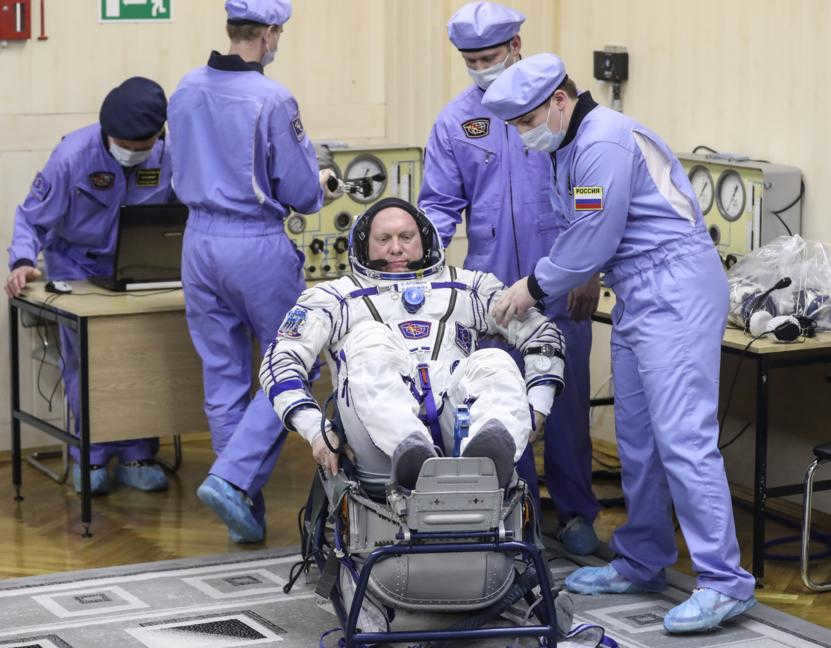
The initial squadron only accepted fighter pilots: young men who were in perfect health, had the physical fitness of a master athlete, and were able to withstand high levels of stress while quickly adapting to unexpected situations. The cosmonauts were sent into uncharted territory: nobody fully comprehended the impact of weak gravity on the human body, the dissimilarity of the environment to Earth, or whether individuals would be capable of identifying danger and promptly making the correct choices.
After nearly six decades since Gagarin’s historic journey, there has been a significant increase in our understanding of human health and behavior in the extraterrestrial environment. Vyacheslav Rogozhnikov, the co-chairman of the primary medical commission responsible for cosmonaut selection and the deputy head of the Federal Medical and Biological Agency (FMBA), has noted that the criteria for selecting candidates have become less stringent. Instead of primarily choosing pilots, the focus has shifted towards doctors, engineers, and mechanics who will conduct numerous experiments during their time in orbit.
The most recent recruitment focused on individuals under 35 years old with a background in aviation, technology, or science (humanities are currently not required for space missions) and professional experience in their respective fields. Additionally, candidates needed to be free from chronic illnesses and possess proficiency in the English language. The Gagarin Cosmonaut Training Center (CTC) conducted medical evaluations to assess the suitability of applicants. According to TASS, a total of 420 applications were received; however, only 13 individuals, all of whom were male, successfully passed the selection process.
Rogozhnikov highlighted the advancements in technology that have revolutionized the medical screening process. Unlike in the past, when diseases were often detected based on indirect symptoms, modern equipment allows for a comprehensive assessment of an individual’s health, even at the genetic level. For instance, it is now possible to identify individuals who are more resilient to high levels of radiation and can adapt to weak magnetic fields encountered outside of Earth.
Qualifying for the cosmonaut squadron has become more accessible, but the training remains intense, challenging, and lengthy – not everyone is able to endure it. Success largely hinges on professional background, training, and, crucially, motivation. Rogozhnikov shared the story of a military pilot who had the potential to become an Air Force commander but chose to embark on a journey as an ordinary cosmonaut, despite discouragement from many. “He ventured into space,” remarked the deputy head of the FMBA.
There is no specific duration specified for training, but typically it lasts around eight to ten years, and in some cases, it can take the full twelve years. However, completing the training does not guarantee that an individual will be able to go to space. At any point during the process, a person can choose to withdraw from the program, as not everything is within their control. Numerous unforeseen events can occur over such an extended period of time, such as the emergence of a chronic illness, the development of a tumor, or a family crisis that can have a psychological impact on the individual.
During their training, candidates are continuously monitored by doctors, which means that they are restricted from engaging in simple activities. “For instance, you are not allowed to attend the theater with your spouse as the performances typically end late, and you are required to be in bed by ten in the evening since you have to go to the pool or training in the morning. You cannot spend time with friends at the country house. Each prospective astronaut dedicates a minimum of two and a half hours per day to training,” Rogozhnikov clarified. The dietary restrictions are also very strict: you must not gain weight and it is not advisable to lose a significant amount of weight.
An astronaut is required to respond promptly and accurately in any given situation. To ensure preparedness, they undergo various types of training, such as flight, underwater, medical, parachute, and even “survival” training. During a parachute jump, the astronaut must not only execute a proper formation, but also solve a mathematical problem and provide the answer after landing.
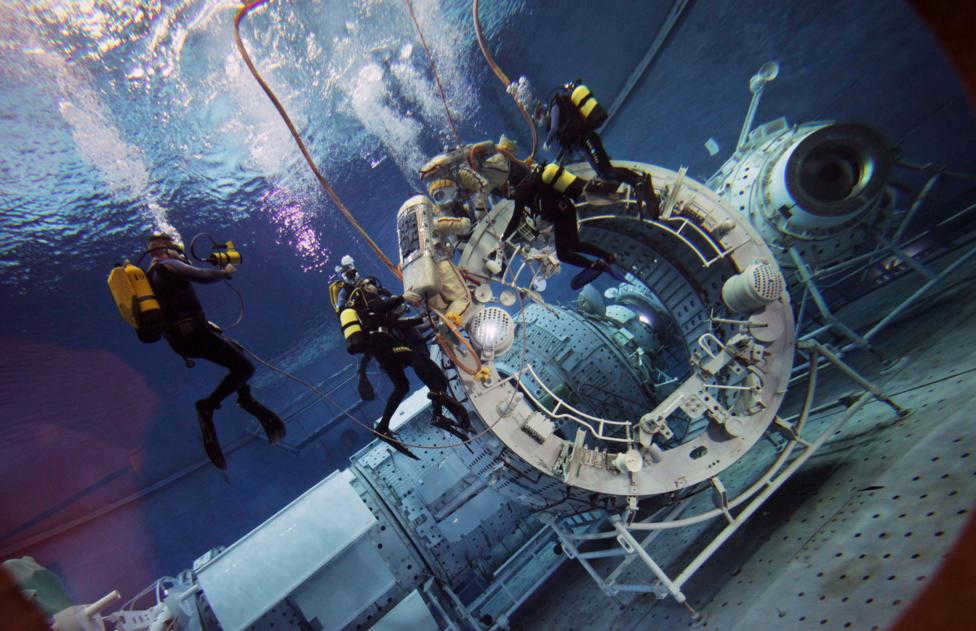
The psychologist’s decision is crucial when it comes to selecting candidates for space travel. The psychological evaluation of potential astronauts includes assessing their ability to handle stress, adapt to a prolonged period of confinement, manage conflicts, make decisions under pressure, process information from multiple sources, and cope with sensory deprivation.
Psychological experiments are carried out during the preparation phase. One of these experiments occurs in a specialized chamber designed for sign language communication. This chamber is a small room equipped with essential facilities such as a shower, a toilet, a table, a chair, and a computer. The interior lighting is kept dim, and it is designed to block any external sounds. Each cadet spends around two to three days inside the sign language chamber, where they undergo various tasks assigned by the instructor. Initially, these tasks are relatively easy to solve, but the cadets are not allowed to sleep during the experiment,” stated Rogozhnikov.
Additionally, psychologists play a crucial role in assisting the commander in selecting the crew members. It is vital to ensure that individuals who are not psychologically compatible with each other are not chosen for the mission. If conflicts arise and remain unresolved, it could lead to an early termination of the flight. This is something that should be avoided, especially considering the high cost associated with space travel,” explained Rogozhnikov.
When the crew is assembled for a future mission, the requirements become even more stringent. From that point on, there is typically a period of six months to one and a half years before the actual flight, but there are still no guarantees for the prospective astronauts.
The challenges don’t end after landing
Sending a person into space is only half the battle: they must also endure the return to Earthly conditions. In the past, astronauts would often require assistance to exit the capsule after a two-week flight. That’s why the Institute of Biomedical Problems has developed recovery techniques. Nowadays, astronauts spend an average of six months on the ISS, regaining their strength after the flight, and if there are no physical or mental health issues, they can then return to Earth.
The main challenges that arise after a prolonged period in a state of weightlessness are primarily associated with the decrease in muscle strength experienced by astronauts. According to Rogozhnikov, one positive sign is if an astronaut is able to stand unassisted for at least one minute upon returning to Earth’s gravity. However, he also noted that the skin on the feet tends to become thinner and the heels can become extremely sensitive, resembling those of a baby, making it painful to stand.
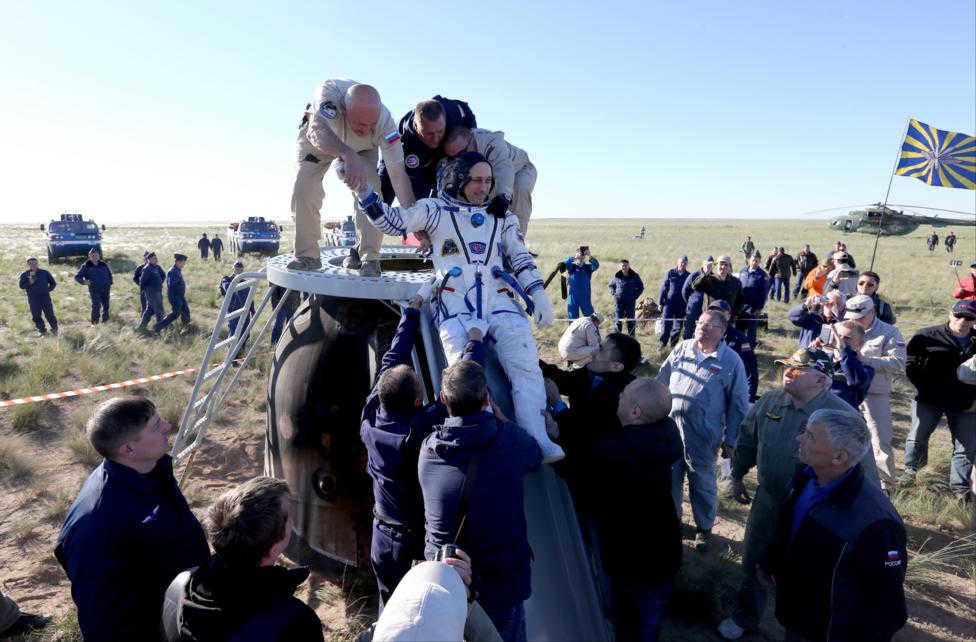
In order to minimize the time required for rehabilitation, the male astronaut aboard the International Space Station (ISS) must adhere to a personalized fitness regimen. A flight doctor closely monitors his physical condition and continuously records all health indicators. The daily training routine in space lasts approximately two and a half hours. It primarily consists of aerobic exercises, as strength training could potentially lead to an increase in muscle mass that may hinder the astronaut’s ability to fit comfortably into the spacecraft seat, thus making the return to Earth more challenging.
There are three stages involved in the rehabilitation process. Initially, for a period of two to three weeks, known as the “acute stage,” cosmonauts are admitted to the CPC named after Yuri Gagarin. Following this, they undergo several months of spa treatment, including physical therapy, hydromassage, and other procedures. Afterward, they return to the CPC, allowing them to fully readjust to life on Earth, as stated by Rogozhnikov. Throughout the entire process, medical professionals closely monitor the cosmonauts’ vital signs, such as heart rate, blood pressure, and perform regular EKGs. Additionally, they measure the level of radiation exposure, which is higher in space compared to Earth. If the radiation level exceeds the acceptable limit, the astronaut will not be allowed to fly again to prevent radiation sickness.
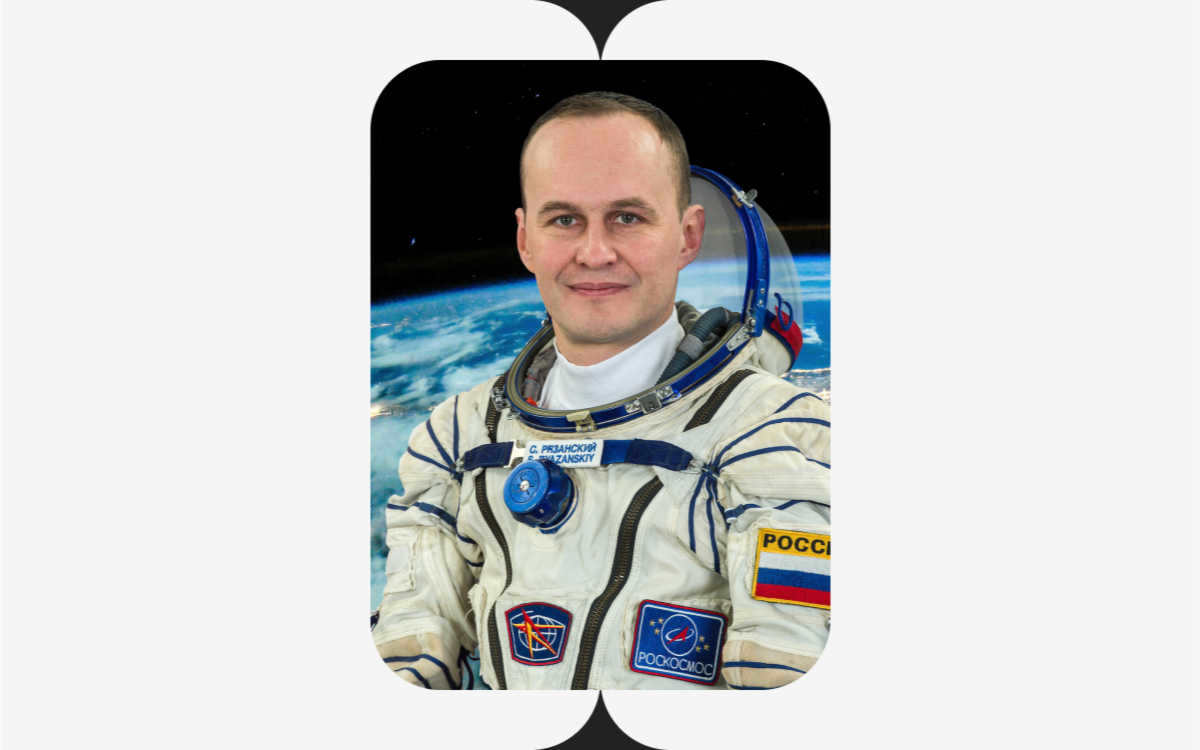
Cosmonaut Sergey Ryazansky – discussing the mysteries of life in space, as well as the qualifications necessary to become a cosmonaut, the importance of problem-solving skills during parachute jumps, and the fears that haunt astronauts on the station
About the speaker: Sergey Ryazansky is a Russian pilot-cosmonaut, candidate of biological sciences and a hero of Russia. He has an impressive career with two space missions totaling 306 days and four spacewalks. Sergey made history as the first scientist-commander of a spacecraft and has captured stunning photographs of our planet from outer space. In addition to his space endeavors, he maintains a blog and writes books, offering valuable insights and advice about life on Earth based on his unique experiences in space.
Guide on How to Become a Cosmonaut
- In order to become a cosmonaut, it is necessary to be a citizen of the Russian Federation and be no older than 35 years old.
- It is also important not to possess foreign citizenship or residence permits in other countries, and to have no unexpunged convictions or disclosure of state secrets.
- A suitable education is required, with a particular emphasis on engineering and piloting. However, individuals with diverse specialties are also welcome.
Firstly, applicants must apply to join the squadron, similar to how one would apply to a university. Following this, applicants must pass all necessary commissions and take entrance exams. These exams, along with medical requirements and physical fitness standards, are provided in advance to ensure that applicants can accurately assess their own abilities.
There is a misconception that the primary requirement for an astronaut is good health, and everything else is of lesser importance. However, in reality, intelligence is the key factor, as without it, one would struggle to grasp the extensive amount of knowledge required and may ultimately be dismissed from the program.
Following this, there are two years of comprehensive space training, culminating in the State Exam, which, upon successful completion, grants the individual the coveted title of “test cosmonaut” and an official cosmonaut certificate.
In my opinion, the demand for this profession remains high. Flights to the ISS are ongoing, new programs are being planned, and in the future, there will undoubtedly be a need for pilots for tourist space travel.
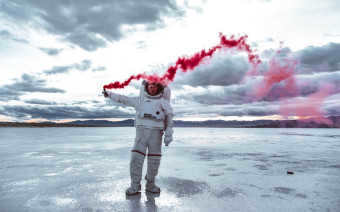
Essential Skills for Aspiring Astronauts
Being an astronaut in today’s world requires a diverse set of skills. In addition to being able to perform surgical operations, program computers, conduct scientific experiments, and pilot spacecraft, astronauts must also be adaptable and interchangeable with their team members.
Here are some crucial skills that every aspiring space conqueror should possess:
- Maintain good health. Physical fitness is a vital tool for astronauts as they need stamina not only for their work on the space station, but also for the extensive training and preparation required beforehand.
- To possess a broad perspective. In order to be a modern specialist, one must have a wide range of knowledge and skills. Therefore, candidates for astronauts must meet serious requirements.
- To participate in sports. Astronauts must maintain their physical fitness. It is important to engage in a variety of physical activities such as cycling, running, swimming, playing badminton, tennis, and working out in the gym.
However, in addition to these requirements, astronauts must also possess the ability to study and wait patiently. Even if you excel in exams and have great potential as a specialist, you may have to wait on Earth while others go to space. But with patience and a commitment to continuous improvement, success is within reach.
Astronaut Salary
The salary of an astronaut today consists of a base salary, compensation, and various types of incentive payments. In April 2021, thanks to a decision made by Russian President Vladimir Putin, the salaries of cosmonauts will see a significant increase. According to Maxim Ovchinnikov, the First Deputy Director General of Roscosmos, cosmonauts without flight experience can expect an average monthly salary of around ₽300,000, while experienced specialists will have the opportunity to earn an average of ₽500,000 per month.
To ensure that every action of an astronaut becomes automatic, extensive training is required. These training sessions are diverse and encompass a range of activities. Some involve studying the workings of various engineering systems, while others focus on simulating abnormal situations to develop problem-solving skills.
Overall, the training program can be divided into two main stages:
- General space training: This stage lasts approximately two years and concludes with a state exam and the awarding of a diploma.
- Group training: This stage can last anywhere from a minimum of two years to a lifetime. If assigned to a crew, additional 18 to 24 months are required to prepare for the first flight under a specific program.
We receive training at various locations including the Cosmonaut Training Center in Star City, as well as training centers in Japan, Germany, and the USA.
Our training includes simulations of spacewalks, where we practice wearing spacesuits and conducting tasks underwater. We also undergo training in survival skills, airplane piloting, stress management, and psychological resilience. Being an astronaut is far from boring.
Parachute jumps are considered one of the most stressful aspects of astronaut training. Not only do these jumps test our physical abilities, but they also challenge our mental capacities. We must concentrate on flying while simultaneously solving problems and deciphering ground signs. And, of course, we must ensure we have enough time to deploy the parachute.
Like any regular individual, I initially approached this task with curiosity and then with apprehension, because it requires jumping every day. Eventually, I developed a strong passion for this training to the point where I accumulated over 750 jumps.
The primary concerns and anxieties of astronauts
Remaining in space is a challenging psychological examination. It can be prepared for in the so-called sign language chamber, where the brain’s ability to function without sleep for several days is tested. However, even such an intense test is incapable of fully simulating all the conditions of working in space.
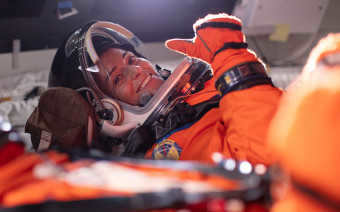
We operate in unconventional conditions for the human body for a period of six months, with minimal time off. Naturally, at some point, mental exhaustion and emotional fatigue set in. To maintain a state of resourcefulness, it is important to have the ability to switch between activities such as watching a television series or engaging in conversation with colleagues.
Being stationed in an environment that is constantly bustling, one becomes more attuned to changes in sounds and the introduction of new sounds. Any alteration, whether it be a change in frequency or the clicking of valves, is easily noticed. Typically, these changes signify a shift in the functioning of the systems and may require intervention.
On one occasion, my coworker Oleg and I experienced loud banging sounds near the station. It transpired that “Earth” had activated the fuel transfer system from the ship to the station without informing us. As a result, the valves opened, causing the knocking noise. The following morning, Oleg called in and requested, “Earth, kindly refrain from repeating that incident. We were contemplating whether a space woodpecker had drilled a hole in the station for us.”
Working aboard space trains is similar to teamwork on Earth. In the modern business world, having a well-coordinated team process is just as vital as it is in space, with one caveat: not only does the overall result depend on it, but so does our very lives.
In space, individuals of diverse nationalities, with varying religious backgrounds and mindsets, must find common ground in order to maintain a positive atmosphere. It is crucial for the team to be united. So, what aids us in achieving this?
A psychological support system. These servers allow Earth-based specialists to upload our favorite music or record a match featuring our beloved soccer team.
Informal communication with the team. This is crucial for team building. Any conflicts that arise can be addressed through dialogue or by playing board games.
Unique methods for relaxation. We organize a zero gravity soccer match, or a doubles badminton match. Once, an Italian and I threw a party and cooked a delicious pizza in space.
How astronauts adjust to new environments
Our bodies are designed to function in the presence of gravity. However, when gravity is suddenly eliminated, numerous physiological processes within the body undergo reorganization. The only solution is to adapt.
Physical Activity in Space
When in space, various metabolic processes undergo changes. For instance, due to the absence of gravity, there is a significant loss of calcium. Additionally, there is a redistribution of bodily fluids and an increase in intracranial pressure, which can lead to specific headaches. Interestingly, physical training has been found to be an effective treatment for these headaches.
As part of their daily routine, astronauts are required to run on a treadmill, which serves as a fundamental workout. Furthermore, there is a bicycle available for astronauts to use. They pedal not only with their feet but also with their hands to develop their shoulder muscles and prepare for spacewalks.
Shower
Showering, undoubtedly, presents a challenge. There are no shower facilities available at the station, and given the requirement to engage in physical activities for a minimum of two hours daily, it becomes necessary to carry out hygiene procedures afterwards. Our method involves using damp towels to cleanse ourselves. We have a specially designed bag that contains a cotton towel, equipped with a valve that allows for the pumping of hot water. By utilizing this ingenious steamed towel, we are able to effectively cleanse ourselves.
Orbital Station Meals
The meals provided to the crew members on the orbital station consist of four main options: breakfast, lunch, dinner, and a snack. It is recommended that men in orbit consume an average of 3,000 kcal per day, while women should aim for 2,700 kcal.
In order to meet the dietary needs of the crew, the previous food tubes have been replaced with freeze-dried meals that can be conveniently prepared on the station. One example of such a meal is porridge, which is specially prepared to have a sticky and viscous consistency.
Interestingly, American astronauts have nicknamed the Russian bread served on the station as “barbie bread” due to its small cube-like shape. This design was implemented to ensure that the entire bread can be eaten without any crumbs, as crumbs can be irritating if they get into the eyes or throat of the crew members.
About the longing for a return to the cosmos
It’s truly remarkable that the field of astronautics has entered a new phase of advancement, with private companies leading the charge. Kudos to Ilon Musk for his extraordinary knack for public relations in showcasing his accomplishments.
Naturally, every national agency is also dedicated to promoting space exploration. It’s only a matter of time before we witness the emergence of space tourism and commercial research laboratories in orbit.
Do I yearn for another journey into space? Absolutely. Spaceflights offer the most incredible sensations and memories: the experience of weightlessness, engaging work, and breathtaking views of our planet.
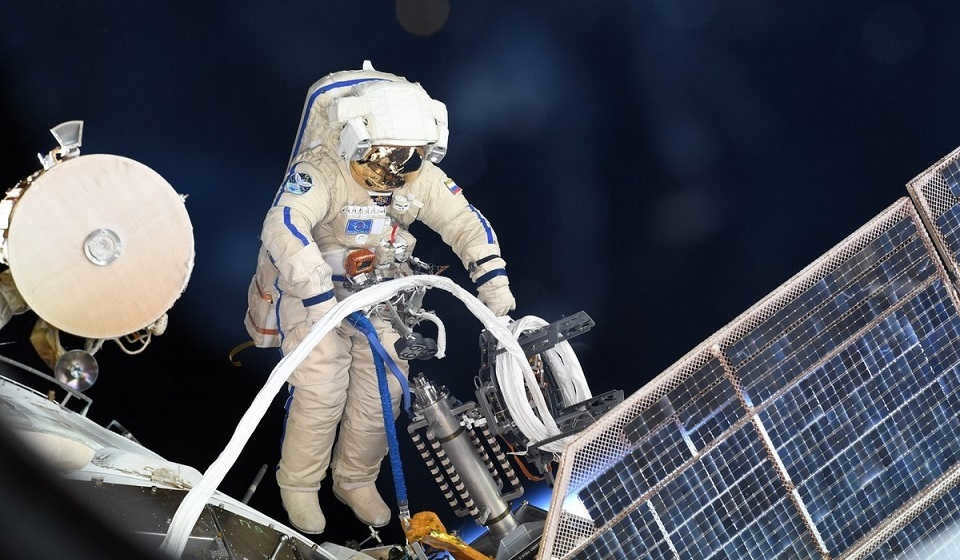
The profession of being a cosmonaut is a testament to one’s patriotism as it involves participating in space missions, maintaining exceptional physical fitness, and having a genuine interest in the field of science. The exploration of outer space is strictly governed by national laws and regulations, ensuring that astronauts and all individuals involved in the study of extraterrestrial realms meet rigorous criteria. Those who have embarked on journeys to the stars are revered as heroes and play a significant role not only within their respective countries, but also on an international scale.
Description
A cosmonaut (known as an “astronaut” outside of Russia) is an individual who has successfully completed Roscosmos’ rigorous selection process, fulfills all professional and medical prerequisites, and consents to participate in space missions. In order to become a cosmonaut in Russia, one must be a citizen of the Russian Federation and be under the age of 35. While on these missions, cosmonauts engage in various scientific experiments, cultivate cacti and roses aboard the spacecraft, test equipment, and even remotely operate robots that are dispatched to destinations such as the Moon for the purpose of exploring its terrain.
To qualify as an astronaut, you must possess outstanding physical health, exhibit psychological stability, meet height requirements of 150 to 190 cm, and maintain a weight range between 50-90 kg. If you have any chronic conditions that remain undetectable on Earth, you will be prohibited from embarking on a space mission. This is due to the fact that the human body can react differently in the microgravity environment of a spacecraft compared to the normal gravity experienced on Earth. However, if you fulfill all the necessary criteria and demonstrate strong motivation, you will have the opportunity to enroll in an astronaut training program.
During the initial six months, no individuals are permitted to enter space. New arrivals receive instruction in theory, including learning about the location of constellations and the composition of space air, among other topics. They are also required to undergo rigorous physical training, which takes place on specialized technical installations and underwater. Additionally, regular medical examinations are conducted. If a person’s mental state is deemed normal and they successfully complete all the terrestrial tests, they may be designated as a candidate for either test cosmonauts or research cosmonauts. However, in order to join a crew and become a test cosmonaut or research cosmonaut, one must endure a waiting period of 6-8 years. The crew size is small, and spaceflights are not as frequent as some Earth-bound dreamers might imagine. As of 2020, only around 600 individuals have had the opportunity to experience space exploration firsthand.
After completing flights, astronauts complete reports, undergo multiple medical examinations, participate in rehabilitation programs, promote Russia’s space activities, and inspire young dreamers. After a year and a half of terrestrial work, astronauts have the opportunity to return to space. If they have accumulated enough experience, these space heroes can become certified instructors as astronaut-testers and astronaut-researchers. As instructors, they educate a new generation of adventurous scientists, ensuring the continuity of space exploration.
To venture into the vastness of the universe, one does not necessarily need to become an astronaut. We will inform you about the educational institutions attended by Gagarin and Titov, as well as where you can enroll today to pursue an exciting space profession that is in demand on Earth.
Areas of Expertise
- test pilot,
- explorer,
- crew commander
- instructor.
Astronaut-scientist has the ability to participate in the cultivation of plants on board, conduct research on the transmission of radio-frequency signals in space conditions, capture images of celestial phenomena, and analyze them.
The commander of the crew is a seasoned astronaut who holds the ultimate authority for the successful execution of space missions and the guidance of the entire crew. The crew commander bears the responsibility for carrying out the mission objectives, ensuring the safety of all personnel aboard the spacecraft, and safeguarding the space vehicle and its contents.
Moreover, astronauts are categorized into three classes: first, second, and third. Possessing a class indicates that the cosmonaut has successfully completed the entire program for either the first, second, or third manned space mission.
Advantages
Being an astronaut is undeniably fascinating. Firstly, space voyages come with substantial financial rewards, class designations, and honorary titles. Additionally, astronauts receive bonuses in relation to their classes and titles.
Secondly, cosmonauts enjoy numerous benefits such as complimentary healthcare, accommodation during their professional tenure, and enhanced pension provisions.
Moreover, being an astronaut brings immense pride not only to the individual but also to their family, city, country, and the entire world. The opportunity to become a part of the select group of star travelers is rare and challenging, but the rewards are worth it. Beyond their space missions, astronauts continue to lead active lives on Earth, engaging in scientific research, diplomacy, lawmaking, and promoting space exploration.
Furthermore, the cosmonaut profession offers the added benefit of training programs that help develop endurance and mental stability. Even those who do not have the opportunity to travel to space can gain valuable skills through training under the Roscosmos program, enabling them to survive and remain calm in any situation. In many ways, cosmonauts are like superhumans.
Russia has initiated a public call for applicants to join the Roscosmos cosmonaut team. Any individual with Russian citizenship and under the age of 35 is eligible to participate. This announcement was made by the state corporation and the Yuri Gagarin Cosmonaut Training Center on July 10, 2023.
The primary objective is to ensure the successful implementation of the Federal Space Program of the Russian Federation, as stated in the official announcement.
It is worth mentioning that this marks the fourth open call for new members to join the Russian cosmonaut team. In 2012, eight candidates were selected, followed by another eight in 2018, and four in 2021. Currently, the Roscosmos cosmonaut team consists of 26 individuals.
Who is ineligible to become a cosmonaut?
In order to conquer space, one must be the best of the best. Therefore, there are strict requirements for applicants. The list of requirements spans four pages.
- Age – must be no more than 35 years old;
- Citizenship – must be a citizen of the Russian Federation;
- Education – must have a higher education;
- Work experience – must have at least three years of experience;
- Health – must have a clean bill of health (no chronic diseases);
- Excellent physical fitness;
- The necessary level of development of professional psychological qualities (resistance to stress, strong communication skills, strong willpower, ability to perform tasks in zero gravity, etc.).
Individuals who meet any of the following criteria are not eligible to participate in the competitive selection:
- Over 35 years old and not a citizen of the Russian Federation;
- Citizens of the Russian Federation who hold foreign citizenship or have a residence permit (or other document confirming permanent residence in another country).
- Candidates who are currently facing criminal prosecution.
- Individuals with an unexpunged criminal record.
- Those who have violated Russian legislation regarding the protection of state secrets.
- Individuals who have been declared incapable or have limited capacity by a court decision that has entered into legal force.
- Individuals with unfavorable individual-psychological characteristics.
What should a future astronaut look like?
The ideal height for a future astronaut in a standing position is between 150 and 190 cm. When seated, their height should range from 80 to 99 cm. Additionally, their body weight should fall within the range of 50 to 90 kg. Various anthropological measurements are also taken into consideration when selecting individuals for space travel, such as shoulder width, chest circumference, hip size, and leg length. Specifically, the hip width while seated should be around 41 cm, the foot length should not exceed 29.5 cm, and the shoe size should be 46. The shoulder width should be no more than 52 cm, the chest circumference should fall between 94 and 112 cm, and the distance between the axilla corners should be up to 45 cm.
The candidate should possess a higher education in a specialized or master’s degree program and have expertise in one of the following fields:
- Informatics and computer science;
- Electronics, radio engineering, and communication systems;
- Photonics, instrumentation, optical and biotechnical systems and technologies; and
- Technologies;
- Electrical and thermal power engineering;
- Nuclear power engineering and technology;
- Mechanical engineering;
- Physical-technical sciences and technologies;
- Aeronautical and rocket-space engineering;
- Aeronautical navigation and operation of aviation and rocket-space engineering;
- Technology;
- Nanotechnology and nanomaterials;
- Mathematics and mechanics;
- Physics and astronomy;
- Chemistry;
- Biological sciences.
Applicants who have a background in higher medical education and practical experience in aerospace, underwater, military medicine, or disaster medicine are also considered eligible for selection. In addition, applicants who have experience as flight personnel and possess higher flight education and a history of service in military units, organizations, or institutions involved in the operation, use, or testing of aviation and space equipment are also eligible.
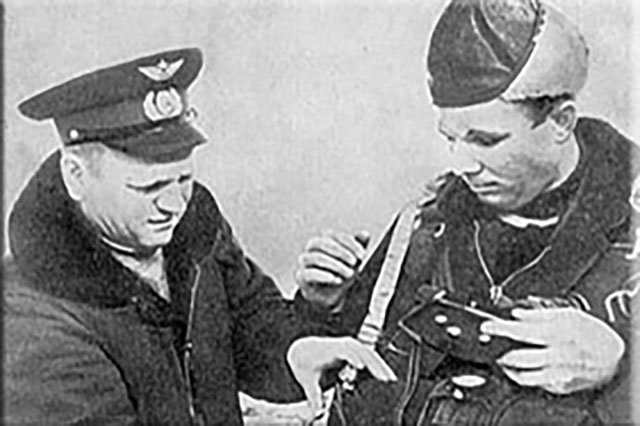
In addition to obtaining a higher education degree, aspiring astronauts must have a minimum of three years of professional experience in their chosen field.
What physical requirements must be met?
Candidates must demonstrate their strength, agility, speed, and endurance, as well as their ability to withstand the effects of high G-forces, zero gravity, hypoxia, and vestibular stimulation. The physical standards include:
- Completing a one-kilometer run in three minutes and 30 seconds, or skiing five kilometers in 24 minutes and 30 seconds in winter.
- Swimming 800 meters freestyle in 20 minutes.
- Diving to a depth of 20 meters.
- Performing at least 12 pull-ups on a bar.
- Executing a standing long jump of at least 2.30 meters.
- Experience the thrill of jumping on a trampoline and performing impressive 90, 180, and 360 degree turns;
- Challenge yourself by standing on one leg with your eyes closed, arms stretched forward, and testing your balance with the Romberg test;
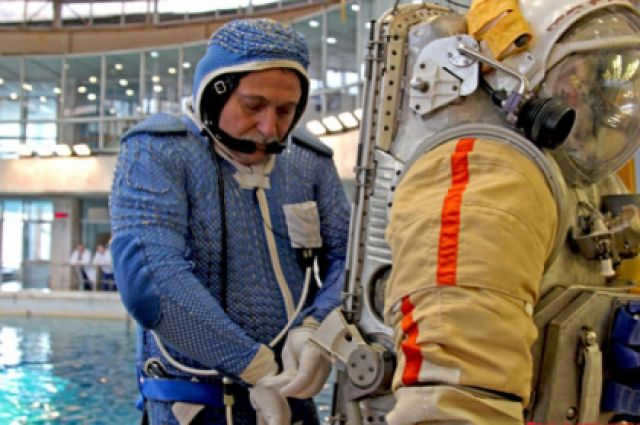
What other skills should a future astronaut possess?
Astronauts are individuals with a wide range of capabilities. Hence, they must have the ability to:
- familiarize themselves with the fundamentals of manned astronautics;
- acquire knowledge about various space equipment and be prepared to utilize it practically;
- demonstrate exceptional memory skills, such as memorizing a significant amount of technical information and terminology;
- be proficient in the use of computers;
- be fluent in at least one foreign language (English, Italian, Spanish, German, French) and preferably multiple;
- possess the necessary level of proficiency in the Russian language (both written and spoken);
- stay well-informed about the worldwide and domestic history of cosmonautics.
The complete set of requirements, along with the documentation that cosmonaut candidates need to submit to the selection committee, can be accessed here.
The deadline for applications is October 30, 2023. The required documents must be sent by mail with a notification to the following address: 141160, Moscow region, Zvezdny Gorodok, to the head of the FGBU “Research Institute of Cosmonauts Center named after Yuri Gagarin” with the annotation “To the Competition Commission for an open competition to select candidates for cosmonauts of the Russian Federation in 2023”.
There is a decrease in the number of individuals who are willing to venture into outer space, however, the prerequisites for potential candidates continue to be demanding
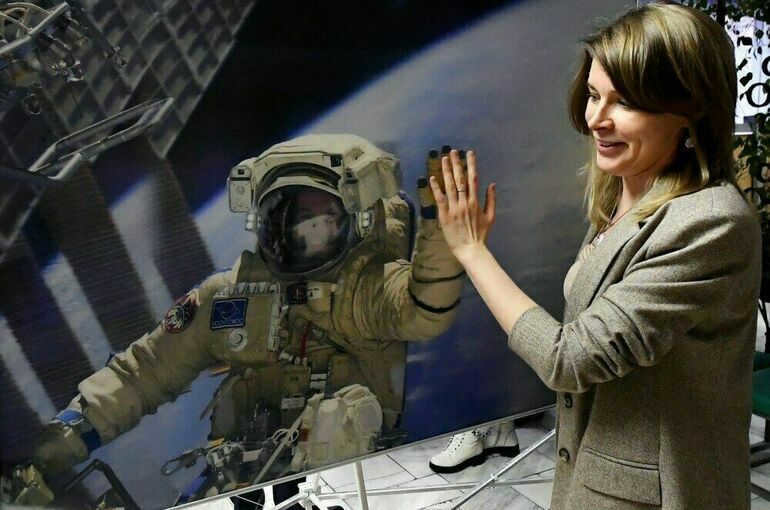
An individual who possesses strength, agility, and flexibility, as well as a higher education, and weighs no more than 90 kilograms, must also be communicative and capable of easily acquiring new knowledge. To become a cosmonaut, one must undergo a rigorous selection process; however, this does not ensure their placement in orbit. Recently, Roscosmos presented an updated procedure for selecting cosmonaut candidates for public discussion. Parlamentskaya Gazeta has obtained information on who will have the opportunity to embark on a journey to the stars.
Notification of Selection Process for Cosmonaut Candidates
A new selection process for cosmonaut candidates has been mandated due to recent amendments to the laws governing space activities and the Roscosmos State Corporation. The directive includes the establishment of a comprehensive procedure for selecting and training cosmonaut candidates, as well as the formation and approval of crews, flight program endorsement, and the provision and rehabilitation of cosmonauts. The Yuri Gagarin Cosmonaut Training Center (CPC), which operates under the authority of the state corporation, will oversee the training process.
The squadron is formed through a competitive selection process, which can be either open or closed. In the case of an open selection, anyone is eligible to participate, while closed selections are limited to specific enterprises and military units without widespread publicity. Roscosmos, the Russian space agency, is required to announce open enrollment at least two months in advance, providing information about the application deadlines and outlining the candidate requirements.
The selection process consists of both in-person and remote stages. Initially, candidates are required to submit their personal information. The general requirements include being a physically fit and law-abiding citizen of Russia with a higher education degree, as well as meeting medical, psychological, professional, and physical criteria.
Only three open recruitments have been held in the history of spaceflight in Russia: in 2012, 2018, and 2021. According to the CPC website, a total of twenty people have passed these recruitments, but only five of them have been in orbit so far. Among these twenty individuals, there is one woman named Anna Kikina, who returned to Earth in March of this year.
In April, Maxim Kharlamov, the chief of the center, mentioned that a new recruitment process would begin soon, but no official announcements have been made yet. According to the draft document, the selection procedure developed by Roscosmos is set to come into effect on October 12th of this year. It is possible that the contest will be launched at that time. This provides potential candidates with ample time to prepare.
The higher education background of the candidate is significant in the selection process. The demand in space missions is primarily for technicians, IT specialists, and chemists, with no inclusion of humanities-related professions. However, there are certain exceptions to this rule. Julia Peresild, a renowned actress, had the opportunity to visit the orbit in 2021.
The medical requirements for space travel are extensive. There is a long list of diseases that are considered disqualifying, totaling 80 points. These range from common conditions like flat feet to more serious issues like stuttering. There are also strict anthropometric requirements that candidates must meet. They must have a height between 150 and 190 centimeters and a weight between 50 and 90 kilograms. Additionally, their foot length cannot exceed 29.5 centimeters and the transverse size of their shoulder area should not exceed 52 centimeters. The chest circumference should be between 94 and 112 centimeters.
In addition to the physical requirements, candidates must also meet specific fitness standards. This includes having good endurance, speed, agility, flexibility, and strength. These qualities are assessed through a series of tests. The psychological profile of the candidate is also evaluated. They must be sociable, able to work well in a team, and able to cope with stress.
There are also separate requirements for professional suitability. Candidates must have a broad outlook and demonstrate an aptitude for learning. They should have a strong ability to memorize technical terms and it is preferred that they speak at least one foreign language.
Advertising is essential in the field of space exploration
Even though a candidate for astronaut may meet all the requirements, it does not guarantee their participation in a space mission or even acceptance into the astronaut team. The final decision regarding each candidate is made by a specialized committee. According to cosmonaut Sergey Zaletin, who was interviewed by the “Parliamentary Gazette,” the process of joining the astronaut team can take a lifetime. Mr. Zaletin, who had the opportunity to travel to space in 2000 and 2002, stated that “anyone can apply, but finding the right person is extremely challenging.”
It is widely believed that every young boy in the Soviet Union had aspirations of becoming a cosmonaut. However, a recent survey conducted by Anketolog reveals that only 26 percent of Russian teenagers today are willing to don a spacesuit. This decline in interest in the profession is concerning, as acknowledged by Maxim Suraev, a cosmonaut and former State Duma deputy who has completed two space missions – one in 2009 and another in 2014. Suraev states, “The recent recruitment efforts for our squadron were lengthy and challenging, as we struggled to find suitable candidates. It seems that fewer and fewer individuals are genuinely interested in the field of space exploration.”
The work of a cosmonaut, even while on Earth, is highly remunerative, as confirmed by Suraev in an interview with the Parliamentary Gazette. However, there is a pressing need for its popularization. The film “Challenge” serves as a commendable exemplar of social advertising, yet its creators have not expanded their efforts beyond that. Regrettably, there is a dearth of information regarding the avenues available for aspiring cosmonauts.
Modern space expeditions may span considerable durations, but ultimately their participants return to Earth. What lies ahead? One option is to remain in the CPC and train the next generation of space explorers. Many cosmonauts actively engage in public service, assuming roles in regional assemblies or even the State Duma. The seventh convocation of the Duma, spanning from 2016 to 2021, witnessed an unprecedented cosmic presence: Valentina Tereshkova, Svetlana Savitskaya, Elena Serova, Roman Romanenko, and Maxim Suraev concurrently occupied seats in the chamber.
The astronauts advised the younger generation to never hesitate in pursuing their dreams. In the end, if one has a true desire to…


